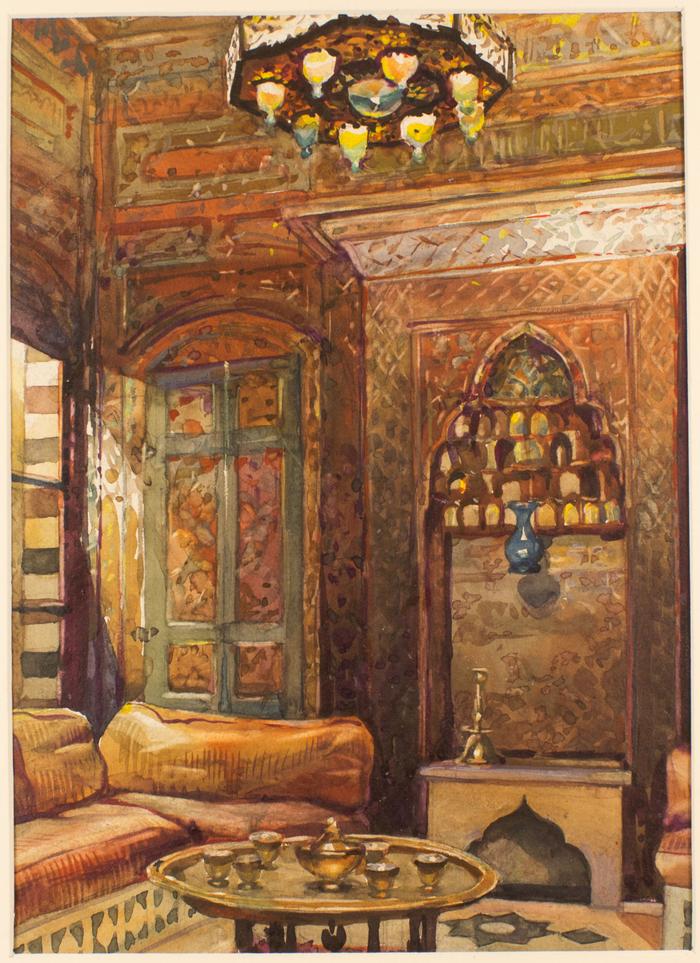Katie Loney, 18 December 2017
As a first-year graduate student in History of Art and Architecture, I didn’t know quite what to expect from an exhibition seminar with such a large number of undergraduate students. Before coming to Pitt, I had worked in museums and art galleries installing exhibitions, researching artifacts, giving historic house tours, and working in a museum registrar’s office. The opportunity to contribute to a single exhibition through the planning, installation, and programming stages, however, was an experience missing from my curatorial training. It was this aspect of the course that first drew me to the seminar. The exhibition’s focus on the Nationality Rooms made it too interesting to pass up, as the topic parallels my research in American decorative arts, collecting practices, and the reception of objects across different cultures and time periods. The show’s emphasis on immigration revealed itself to be a fruitful lens for examining the Nationality Rooms. As a class, we aimed to produce a show that highlighted the Nationality Rooms’ desire to link immigrant communities together across six decades.
Reflecting on the course, it has been both challenging and rewarding. Planning, installing, promoting, programming, writing a catalogue, and de-installing a show in the University Art Gallery (UAG) over the course of three months is no easy feat. Fortunately, Professor Shirin Fozi, UAG curator Isabelle Chartier, and UAG curatorial assistant Ellen Larson were brilliant guides who did a great deal of organizing before and during the semester. They structured the course in such a way that allowed for students to play a vital role and have an active voice in the planning and installation of the show, while ensuring that it was thoughtful, issue driven, and accessible.
Working in the Agency group, which was responsible for curating the displays in the UAG hallway vitrines, gave me a powerful platform to think about selecting and arranging objects on the theme of ritual and sacred space in the Nationality Rooms. The Syria-Lebanon Room came to be a significant feature of our displays. The room dates to the eighteenth century and used to be a private library in Damascus. The Syria-Lebanon Room committee purchased the room as a gift to the University of Pittsburgh, where it was repurposed as a classroom. For preservation reasons, it no longer functions as a classroom, but still plays an important role in the Nationality Rooms where it has become part of a system that aims to represent Pittsburgh’s identity. It sits in the Cathedral of Learning next to the Chinese Room, the Indian Room, the English Room, and the African Heritage Room, just to name a few. For my group, the inaccessibility of the Syria-Lebanon Room as a classroom acted as a useful foil for the other Nationality Rooms and their artifacts as we considered issues of agency, sacredness, and ritual.
While the Agency group gave me an opportunity to select and arrange objects for an exhibition, my involvement in the publications group provided a crash-course in designing promotional materials and editing wall texts. Providing these opportunities is precisely what the course is designed for, and why it is such an asset to undergraduate and graduate students alike. For me, as someone who has been studying art history and working towards a curatorial career for several years, the class also offered something more. Working with Professor Fozi and some fantastic undergraduates over the course of the semester gave me the opportunity to consider innovative ways to engage the public in collections. How might I open an art collection to high school, college, or graduate students? In what ways can I create programs that allow the public to take ownership in museum exhibitions? How can the museum be a place that facilitates conversations about social issues? The exhibition seminar allowed me to explore these questions in concrete ways. Working collaboratively with faculty, curators, and undergraduate students, we created an exhibition that engaged the public in discussions of agency, identity, and visual knowledge through historical artifacts.

